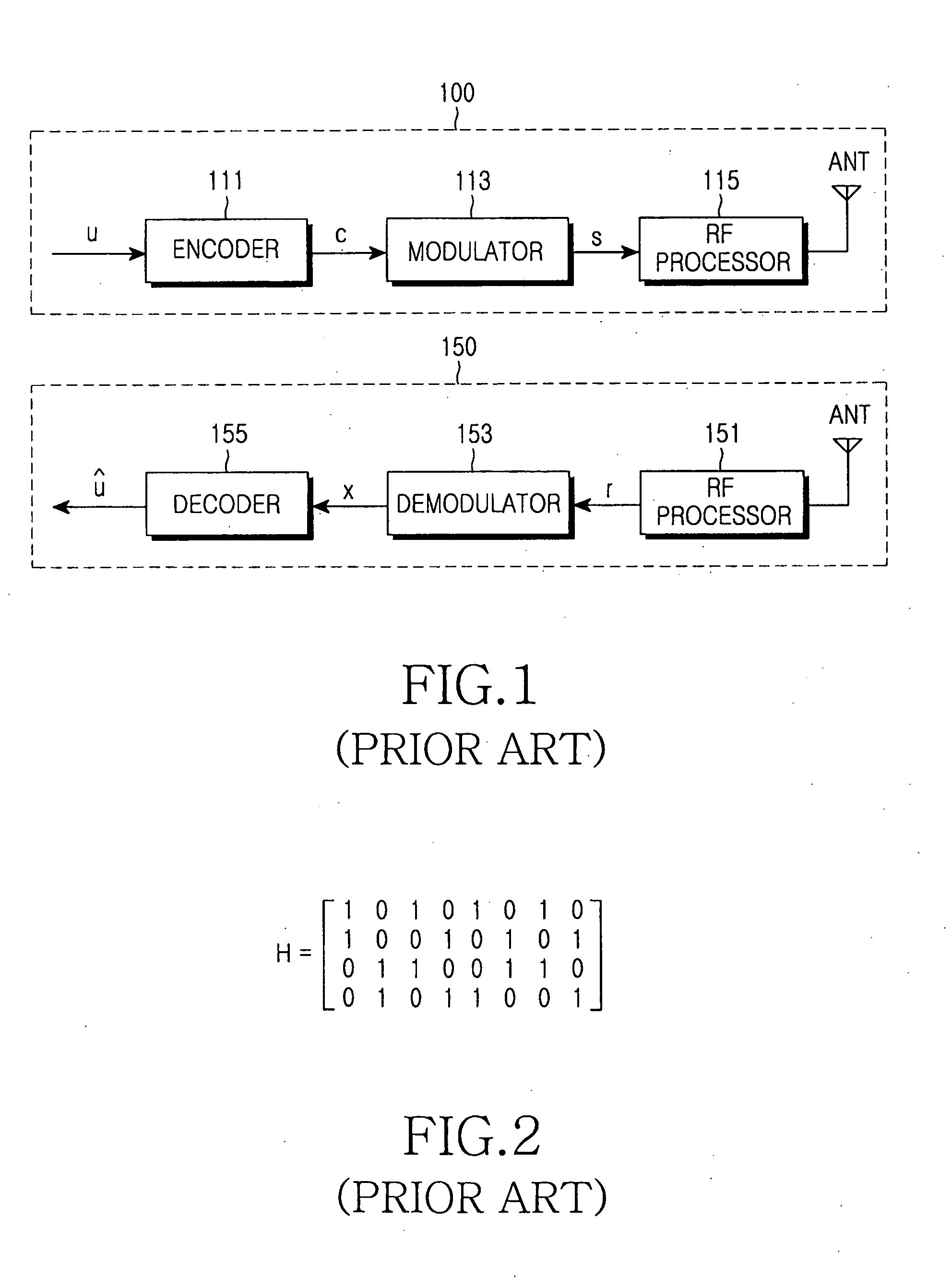Apparatus and method for transmitting/receiving signal in a communication system using low density parity check code
a communication system and low density parity technology, applied in the direction of coding, digital transmission, code conversion, etc., can solve the problems of inability to specify the detailed channel coding/decoding method for supporting a data rate, inability to accurately detect the data rate, and inability to transmit information data. to achieve the effect of reducing the complexity of coding
- Summary
- Abstract
- Description
- Claims
- Application Information
AI Technical Summary
Benefits of technology
Problems solved by technology
Method used
Image
Examples
first embodiment
[0102]FIG. 10 is a flowchart illustrating a process of generating a parity check matrix of a rate-compatible QC-LDPC code according to the present invention.
[0103] Referring to FIG. 10, in step 1011, a controller (not shown) of a communication system defines a parameter NB indicating the number of block columns of a parent parity check matrix. In step 1013, the controller substitutes a value NB−1 determined by subtracting 1 from the parameter NB in the parameter NB.
[0104] The reason for substituting the value NB−1 in the parameter NB is to indicate the number of block columns determined by subtracting 1 from the number of block columns of the parent parity check matrix in order to select the block columns to be removed from the parent parity check matrix.
[0105] In step 1015, the controller detects an optimal degree distribution of a parity check matrix that has NB block columns and uses the degree used in the parent parity check matrix. Herein, the optimal degree distribution of t...
second embodiment
[0117]FIG. 11 is a flowchart illustrating a process of generating a parity check matrix of a rate-compatible QC-LDPC code according to the present invention.
[0118] Referring to FIG. 11, in step 1111, a controller (not shown) of a communication system defines a variable NB indicating the maximum number of block columns to be used. In step 1113, the controller defines a variable Ns indicating the minimum number of block columns to be used. In step 1115, the controller detects the optimal degree distribution for when Ns block columns are used. Herein, the optimal degree distribution for when Ns block columns are used is detected using the density evolution scheme. In step 1117, the controller defines a variable i, and substitutes a value Ns+1 determined by adding 1 to the variable Ns in the variable i. Herein, the variable i is used to indicate a parity check matrix that uses i block columns by increasing it one by one.
[0119] In step 1119, the controller detects the optimal degree dis...
PUM
 Login to View More
Login to View More Abstract
Description
Claims
Application Information
 Login to View More
Login to View More - R&D
- Intellectual Property
- Life Sciences
- Materials
- Tech Scout
- Unparalleled Data Quality
- Higher Quality Content
- 60% Fewer Hallucinations
Browse by: Latest US Patents, China's latest patents, Technical Efficacy Thesaurus, Application Domain, Technology Topic, Popular Technical Reports.
© 2025 PatSnap. All rights reserved.Legal|Privacy policy|Modern Slavery Act Transparency Statement|Sitemap|About US| Contact US: help@patsnap.com



